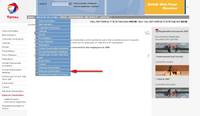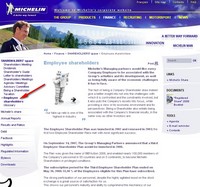Have you ever thought about who your target audience is?
Marketers obsess over their target audience like Gollum over his ring. No one wants to waste dollars or effort where they won’t be received well. That’s why you’ll never see an ad with a purple haired snowboarder doing a back flip off a cliff in the AARP magazine. (Note to our non-American friends: American Association of Retired People) But, have you ever thought about who your target is with your Investor Relations website?
Sure, your target audience is investors. But, what kind of investors? Sally Housewife? DayTrader Dan? Analysts? Employees? Each group might want to see a little something different. Even more important, each group might NOT want to see some things. So, who is your site for?
Employee Investors
Most IR sites seem to be primarily targeted at public investors. This may be less of a strategic choice, and more a function of what information is available that can be easily published without any legal fears. Prospectuses, annual reports, and the like are all generated according to rules and regulations governing what can and must be published for the general public. But, not all investors are alike.
Some companies provide various stock programs to their employees. Whether stock options, ESPP programs, or even company stock as an option in a 401(k), these programs help establish not only employee loyalty, but a sense of being on the same team as management. After all, if the stock price rises, they benefit too. Most companies administer such programs and provide information regarding them via their internal Human Resources systems. But, what about after these employees leave the company? Whether by retirement, or just moving on, some of these former employees will still be desirable shareholders. Is there anything on the IR site for them? Just a name and phone number as a contact can be very helpful for employees who left long enough ago to no longer have current information on how to reach someone.
As a former financial advisor, I helped many long time retirees, or even their widows with their holdings of company stock. Often times, they had spent years in retirement without selling a single share of stock. Now, the confusing certificates and statements aren’t much help when they need some extra cash, or if their beneficiaries are wondering what they have and what they can do with it. As a professional, I know to start by checking Bank of America, but that doesn’t always help, and your average widower has no idea where to even start.
IR Best Practices
If your company offers stock based compensation or other programs to your employees, be sure that the statements they receive have not only an internal information system on them, but a public one as well. A great place to include that is on your IR website. Not only is this a logical place to look for advisors, retirees, and beneficiaries, but it also reminds your other investors that you have a program that helps build shareholder value via your employee and former employee shareholders. Direct posts or information regarding retirees who remain shareholders would likely be frowned upon, but there is nothing to stop a thorough investor from clicking on a “Retired Shareholders” or “Employee and Former Employee Link.” Should they draw the conclusion that your company must have a healthy amount of loyal employee and retiree shareholders, that is only good news for your mission to increase investment and investor confidence.
For examples to look at, both Total and Michelin have employee shareholder sections on their websites.
Brian is a small business owner, consultant and freelance writer. Brian began his professional career in the computer industry as a consultant where he became keenly aware of the internal workings of companies from Fortune 100 giants to small two-man shops. While working with a mutual fund company, Brian developed a strong interest in finance and became a Certified Financial Planner. As a financial professional, Brian specialized in working with small business owners. Brian is the co-founder of ArcticLlama, LLC a premier business writing and consulting firm. He also runs a real world personal finance blog. Brian lives in Denver with his wife and daughter.

